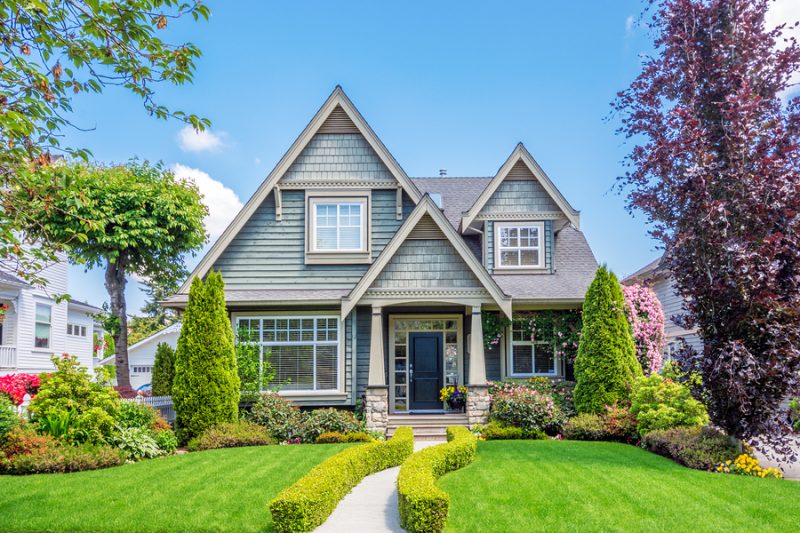Large Firm Service. Small Firm Attention.

SHARE
Multi-Generational Homes: A Checklist
Published August 15, 2018
Multi-generational living arrangements are on the rise, and for good reason. Growing numbers of aging parents are seeking both comfortable surroundings and affordable care by sharing space with family members. Millennials are moving back into their parents’ home until they acquire sufficient income to live independently. And in some cases multi-generational households are being created merely because family members are discovering that they can purchase a larger, more desirable residence by pooling financial resources with relatives.

In its 2018 Home Buyer and Seller Generational Trends Report, the National Association of Realtors reported that one in five homebuyers between the ages of 53 and 62 purchased a home during the prior year that suited for more than one generation of family members. NAR also found that significantly older home buyers — persons age 72 to 92 — purchased 17 percent of all multi-generational homes sold that year.
No longer stigmatized, multi-generational living arrangements reflect a growing belief that shared living spaces promote improved health, prosperity and support at any stage of life.
However, it is important to recognize that multi-generational living arrangements are still somewhat novel in the eyes of the law. A hastily arranged real estate acquisition with family members can have adverse effects from an estate planning standpoint, create unforeseen legal liabilities, impair Medicaid eligibility and, perhaps most importantly, unnecessarily damage longstanding inter-family relationships.
With careful planning, the law-related pitfalls of multi-generational households can be avoided.
Before families plunge into a multi-generational living arrangement, they should be sure to have an answer for each of the following questions:
- How will the dwelling be owned? Will the adults own the dwelling as tenants in common, joint tenants, landlord/tenant? If a loan is necessary to acquire a dwelling, whose name(s) will be on the mortgage?
- What will happen when one member of the household dies? Will the remaining adults automatically obtain the deceased family member’s interest, or will the decedent’s share go to his or her heirs?
- In the case of an aging parent, what arrangements for care are necessary once the parent moves into the multi-generational dwelling? Everyone in the family should have a clear idea regarding the level of care needed for an aging parent, who will provide that care, and whether care services will be compensated.
- Will proposed modifications to the dwelling comply with local zoning ordinances and building codes? If not, a variance or special exception will have to be the obtained. Legal costs associated with this process are not insignificant, so family members must reach an understanding regarding responsibility for these expenses.
- If remodeling is necessary, who will pay the costs of those improvements?
- Who will pay the increased taxes on the newly improved dwelling? Also, who gets any tax credits that might be associated with the remodeling work?
- Who will pay for utilities and other shared household expenses?
- Is there an expectation that an aging parent will provide services to other family members (e.g., babysitting and meal preparation)? How will these services be compensated?
- Is there an expectation that younger family members will provide care services to an aging parent? If so, a personal services contract can, under the right circumstances, allow the aging parent to transfer wealth to younger family members without violating Medicaid eligibility rules.
- Who will benefit from the increased value of the dwelling after remodeling?
- Is the planned multi-generational dwelling flexible enough to accommodate the addition of new children?
- Have all costs associated with acquiring and maintaining a multi-generational dwelling been considered? In addition to the purchase price, family members reach an agreement on who will be responsible for property taxes, repairs, renovations, utilities, telecommunications services, and outside tasks such as landscaping, snow removal, and gutter cleaning.
- Is there an exit strategy? What will happen if some owners want to leave the home, perhaps to live again by themselves or to move to an assisted care facility?
- Have the benefits and drawbacks of purchasing or creating a shared living space been thoroughly discussed by all family members?
- Have all agreements and understandings been reduced to writing?
Clearly, families interested in creating a multi-generational household have a lot of issues to work through — emotional, financial and, yes, legal. Families equipped with a thorough knowledge of the legal issues involved and a willingness to carefully plan their future stand the best chance of creating a home that meets the needs of all family members. In most cases, that means engaging legal and financial experts at the earliest possible opportunity.
Learn more about our special needs planning and special education advocacy services at www.littmankrooks.com or www.specialneedsnewyork.com.
Was this article of interest to you? If so, please LIKE our Facebook Page by clicking here or sign up for our monthly newsletter.
Categories
Recent Posts
Explore In-Depth

Corporate & Securities

Elder Law & Estate Planning

Special Needs Planning

Special Education Advocacy


















